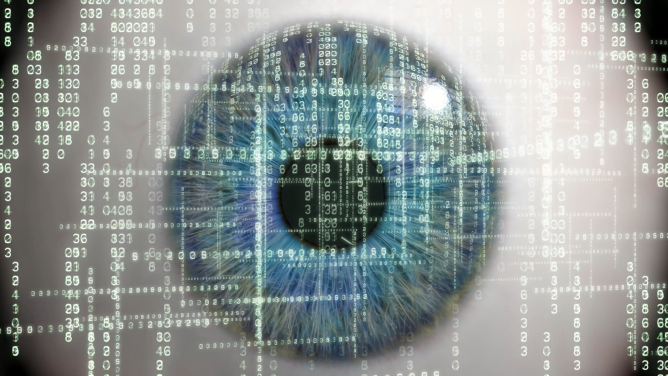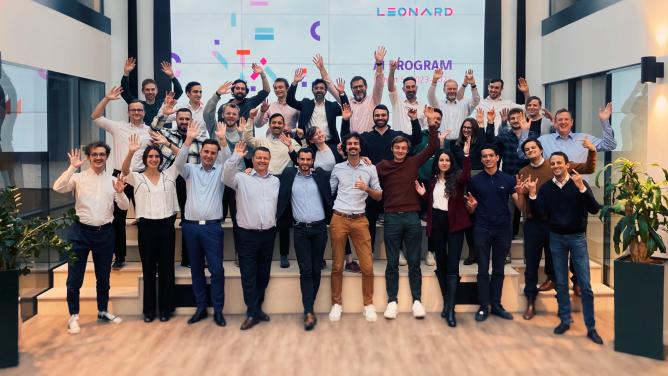What is mirrorworld?
According Kelly, merging different technologies enables us to accurately duplicate the physical world in a digital reality, where every object will have its twin, filled with information and ready to be manipulated. More than just a map and richer than an image, mirrorworld has profound links to new mixed or augmented reality technology and opens up new possibilities in the world. For example, at the Renault Trucks factory in Lyon, they use Microsoft HoloLens which is totally redefining how motor quality controls are performed: a 3D projection of the digital twin appears right in front of the truck’s physical motor, visually instructing operators which areas need repairing directly.
All this has now been made possible due to the increase in tiny cameras everywhere throughout the world and also technological advances in modelling. This rise in digital twins already exists in several different forms, and is increasingly being used in industrial contexts. GE is already creating digital twins of certain industrial machinery to facilitate maintenance and prevent accidents, and they can even communicate between themselves too.
A must for major projects
In the construction industry, BIM (Building Information Modeling) uses a process of simulations which can also be described as a potential layer of mirrorworld. It’s now possible to extract building zones in 3D accurate to within 2.5cm, and it’s made it much easier to manage infrastructure throughout all jobs in the industry. In Amsterdam, a 3D-printed metal bridge will be monitored and analyzed through the use of a digital twin. Various models can be created, mapping and pinpointing the different strains to which the bridge is exposed (wind strength, pedestrian footfall, material ear and tear…).
In France, the SNCF (the national rail network) has launched a rather ambitious project to create a digital twin of their whole rail network – a world first for infrastructure of this size. Creating digital twins of train stations to facilitate on-site management is already part of this global strategy. The latest example can be found in Paris, where 2,400km of sewer systems have been digitized to help reduce human intervention.
Mirrorworld potentially impacts a sphere much larger than the industrial, manufacturing world. Augmented reality can be used to “overlay” different work spaces, accessible from wherever you are in the world. In these virtual offices, you can have as many screens as you like, but also spaces for prototyping and carrying out training programs. In an operational context (for example, repairing a building or a machine, or even on the army battlefield), virtual reality headsets can enhance the environment with information updated in real time. Man-machine, man-man or machine-machine: whatever its configuration, collaboration is happening more easily.
Is mirrorworld an old ambition?
The history of mirrorworld dates back much further than the Wired article. Back in 1993, Yale University computer engineer David Gelertner invented the expression in relation to the Internet, which appeared in his book Mirror Worlds, with the rather evocative sub-heading: “The Day Software Puts the Universe in a Shoebox”. Much further away from today’s technological uses, modernity has mainly made the idea of creating a representation of the world grow, using this representation as a way of better understanding, calculating and, in short, controlling it. The 17th-century German philosopher Leibniz’s main project was to logically characterize all the objects in the world in order to carry out non-ambiguous calculations on items.
Digitize a planet under threat?
As is the case for any mapping job, mirrorworld raises the question surrounding representing the world: who represents it? According to what subjectivity? Do certain objects deserve to be digitized more than others? The question of big data bias is nothing new, but it seems to take on a whole new perspective.
Finally, the issue surrounding the financial cost of large-scale planetary digitalization comes up. Digital powerhouses promised dematerialization and efficiency, but that doesn’t necessarily make them environmentally friendly by nature – far from it. The L’agenda pour un futur numérique et écologique (The Agenda for an Ecological and Digital Future), which was published by Transitions2 and FING in March 2019, reminds us of this fact. On the contrary, digital’s ecological footprint is getting bigger and it surely won’t be possible to build enough sensors and generate enough energy to “datafy” the planet. It’s also pretty striking to remark the over-zealous enthusiasm for mirrorworld and the rising awareness of environmental issues: the search for “another world” (which Bruno Latour calls an attraction for the Hors-Sol, or rather, living detached from the land) – is a type of reaction to the environmental crisis, a way of escaping to another space.
As is already the case, mirrorworld’s uses are surely going to revolutionize many aspects of our existence and our jobs. But we must surely remove the the fantasy of another world from the equation.


